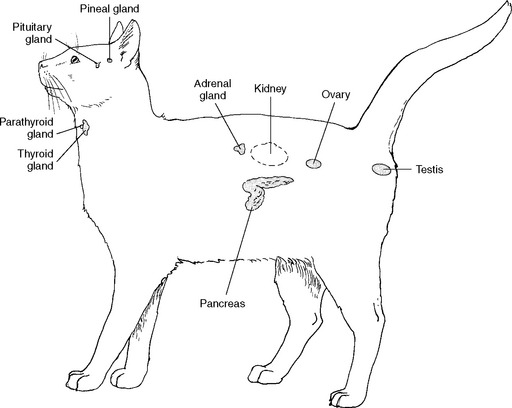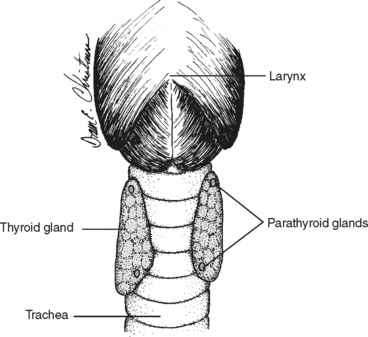Chapter 3 Diseases of the Endocrine System
The cells of the body must maintain homeostasis (equilibrium) with their internal environment because the chemical processes conducted at the cellular level can occur only under specific conditions. The endocrine system works together with the nervous system to achieve a stable internal environment; each system may work independently or the systems may act together to accomplish this task. The hypothalamus and the pituitary gland regulate the release of chemical messengers called hormones (chemicals secreted directly into the bloodstream) to signal target cells to perform certain functions in response to changes in homeostasis. As hormone concentrations in the blood increase, the system is signaled to reduce hormone production; this negative feedback system works much the same way as a thermostat controls the heating system in your home.
Ideally, the glands that regulate the release and balance of hormones work continuously to maintain homeostasis. When one or more of these glands work ineffectively, incorrectly, or not at all, the potential for problems develops. The endocrine glands most commonly involved in diseases of small animals are the thyroid gland, adrenal gland, pancreas, parathyroid gland, and gonads (testes and ovaries) (Fig. 3-1).

Figure 3-1 Locations of major endocrine glands in the cat.
(From McBride DF: Learning veterinary terminology, ed 2, St Louis, 2002, Mosby, by permission.)
THYROID GLAND
Two common diseases of small animals involve the thyroid gland (Fig. 3-2): hypothyroidism (insufficient thyroid hormone) and hyperthyroidism (excessive thyroid hormone). Hypothyroidism is most commonly seen in the canine (1/156-500 animals). Hyperthyroidism is seen primarily in the cat.

Figure 3-2 Canine thyroid and parathyroid glands.
(From Christenson DE: Veterinary medical terminology, Philadelphia, 1997, WB Saunders, by permission.)
Hypothyroid Disease
CLINICAL SIGNS
DIAGNOSIS
TREATMENT
Hyperthyroid Disease
DIAGNOSIS
TREATMENT
Radioactive iodine-131
Antithyroid drug therapy
INFORMATION FOR CLIENTS
PANCREAS
Diabetes Mellitus
Therapy for diabetes mellitus in most animals includes dietary regulation (usually a high-fiber diet) and daily insulin replacement. In non–insulin- dependent cats, drug therapy and diet restriction are somewhat successful in managing the disease.
CLINICAL SIGNS
Nonketotic diabetes
TREATMENT
Dietary management
Insulin Therapy
Stay updated, free articles. Join our Telegram channel

Full access? Get Clinical Tree


